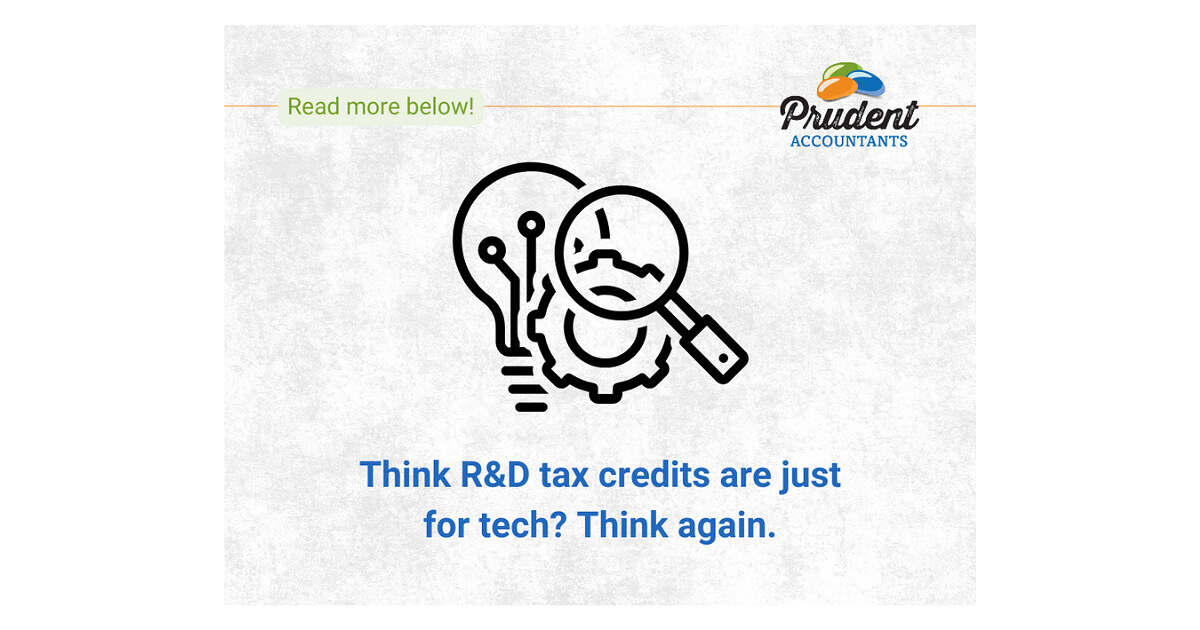The R&D Tax Credit Isn’t Just for Tech: How Small Businesses Can Qualify and Save

When you hear “research and development tax credit,” you might picture scientists in lab coats or tech companies building new software. But what most business owners don’t realize is this: many small businesses qualify, and they’re missing out on thousands in potential tax savings each year.
If your business is developing new products, testing recipes, improving production methods, customizing processes, or experimenting with new techniques—you may already be doing R&D work without realizing it.
What Is the R&D Tax Credit?
The R&D Tax Credit is a federal incentive that reduces your income tax liability for qualified research and development (R&D) expenses. It’s a dollar-for-dollar credit, not just a deduction, meaning it can directly reduce what you owe the IRS.
Depending on how your business qualifies, the credit can be worth 14% to 20% of your eligible R&D expenses.
What Qualifies as R&D?
R&D goes far beyond high-tech product development. To qualify, your activities must meet four criteria:
- Have a business purpose – Your work must aim to develop or improve a product, process, formula, invention, software, or technique that enhances functionality, performance, quality, reliability, or durability.
- Involve uncertainty – You’re testing capability, design, or methods with unknown outcomes.
- Be technological in nature – Your work relies on disciplines like engineering, biology, chemistry, physics, or computer science.
- Use a process of experimentation – You test, trial, or evaluate alternatives in a systematic way.
Common examples:
- Modifying a production line to increase output or reduce waste
- Developing new food or beverage formulations
- Building custom internal-use software
- Creating prototypes or conducting process trials
- Testing packaging for durability, shelf life, or shipping efficiency
What Doesn’t Count?
- Research done outside the U.S.
- Market research or focus groups
- Standard quality control testing
- Software that doesn’t involve substantial innovation
- Aesthetic or stylistic changes only
Real-World Savings Example
Let’s say your business spends $300,000 on qualifying research activities this year (employee time, materials, testing, etc.).
Using the Alternative Simplified Credit method:
- You calculate the average R&D spending for the last 3 years as $200,000.
- The credit = 14% × ($300,000 – $100,000) = $28,000
That’s $28,000 less in federal tax liability—and potentially even more if your state offers an R&D credit too.
What Expenses Can Be Included?
- Wages for employees doing the R&D work
- Supply costs and materials used in testing
- 65% of contractor payments for U.S.-based R&D support
- Certain software development costs
- Overhead costs like depreciation or payroll tax (with proper allocation)
Important 2022+ Changes to Know
Prior to 2022, R&D costs could be deducted fully in the year they were incurred. Under current law:
- Domestic R&D costs must now be amortized over 5 years
- Foreign R&D costs are amortized over 15 years
This makes claiming the credit even more valuable, since your deductions are spread out over time—but your credit reduces your taxes immediately.
How to Claim the Credit
- Identify qualifying R&D activities
- Track the related costs with strong documentation
- Choose a method (Traditional or Simplified) to calculate your credit
- File Form 6765 with your tax return
You’ll also need a solid audit trail, including:
- Employee time tracking
- Project descriptions and technical documents
- Trial data, test logs, or development notes
- Proof that expenses were incurred in the U.S.
Final Thoughts
You don’t need to run a tech company or operate in a lab to qualify for the R&D tax credit. If you’re improving your products, experimenting with processes, or developing new techniques—even in food production, construction, or services—you may already be eligible.
Don’t leave money on the table. With the right guidance, the R&D credit can help reduce your tax burden, improve cash flow, and support continued growth.
